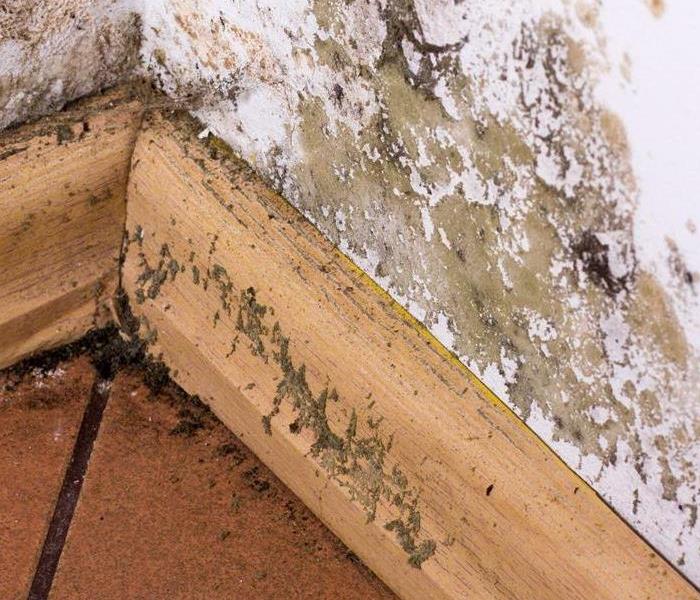The Hidden Dangers of Mold After Water Damage
10/9/2024 (Permalink)
 Mold is evident on the lower wall and baseboard, probably resulting from concealed moisture problems, emphasizing the urgency for remediation.
Mold is evident on the lower wall and baseboard, probably resulting from concealed moisture problems, emphasizing the urgency for remediation.
Water damage can lead to a significant, yet often overlooked, threat: mold growth. Mold can begin to flourish within 24 to 48 hours after water exposure, posing health risks and causing costly damage. Understanding how water damage leads to mold and how to address it is crucial for homeowners and business owners alike.
Why Mold Grows After Water Damage
Mold spores are everywhere and become problematic when they find damp environments, such as those created by leaky roofs, burst pipes, or flooding. Once moisture is present, mold can quickly spread, compromising both health and structural integrity.
Steps to Address Mold After Water Damage
Act Quickly: Time is crucial. Contact professionals immediately upon discovering water damage to minimize mold risk.
Inspection: Professionals will conduct a thorough inspection to assess damage and mold risk, forming a tailored remediation plan.
Containment: Isolate affected areas to prevent mold spores from spreading.
Water Removal: Use pumps and vacuums to eliminate standing water as quickly as possible.
Drying: Employ industrial dehumidifiers and fans to thoroughly dry the area, reducing humidity levels.
Mold Cleanup: Remove visible mold and any irreparable materials, like drywall and carpets.
Restoration: Repair and restore any damaged areas to return your property to its original state.
Choosing a Mold Remediation Service
When selecting a remediation company, look for:
- 24/7 Availability: Mold needs immediate attention.
- Certifications: Ensure they are certified in mold remediation.
- Advanced Equipment: Inquire about their tools and techniques.
- Good Reputation: Check reviews to gauge reliability.
Mold poses serious risks after water damage, but understanding the situation and acting swiftly can protect your property and health. By choosing a reputable remediation service and taking preventive measures, you can safeguard your environment from the dangers of mold.






 24/7 Emergency Service
24/7 Emergency Service